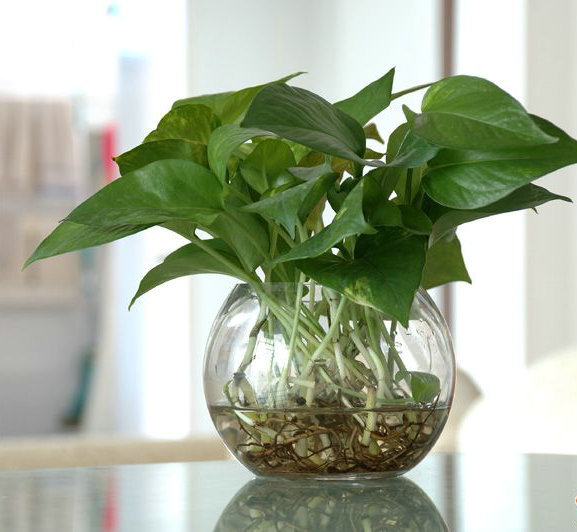What are the plants that purify the air?
There are many kinds of plants to purify the air. In fact, many of them are very common in our life, and many of them are also names that we are familiar with. If you are not very clear about them, let's take a look at them with us.
What are the plants that purify the air?
1. Hanging orchid: the hanging orchid is not only beautiful, but also has a good effect of absorbing toxic gases. Even in an undecorated room, keeping a pot of orchids is good for people's health.

2, aloe: aloe has a certain role in absorbing odor, and there is the effect of beautifying the room.
Cactus: most plants absorb carbon dioxide and release oxygen during the day, but vice versa at night. But cactus, tiger skin orchid, sedum, aloe and hanging orchid are always absorbing carbon dioxide and releasing oxygen.
4. Safe trees: at present, large plants such as Ping an tree and camphor tree are more popular in the market, which can release a fresh gas and make people feel happy. Ping an tree is also called "cinnamon".
5. Rose: it can absorb hydrogen sulfide, hydrogen fluoride, benzene, ethylphenol, ether and other gases, and has considerable resistance to sulfur dioxide and nitrogen dioxide.
6. Tiger tail orchid: natural scavenger, one pot of tiger tail orchid can absorb more than 80% of harmful gases in the room of about 10 square meters, two pots of tiger tail orchid can basically completely purify the air in the general room; tiger tail orchid can also release a lot of oxygen during the day.

7. Aloe vera: the flower proverb says, "hanging orchid aloe vera is a strong hand, formaldehyde is scared to avoid." Evergreen aloe can absorb peculiar smell for a long time. In addition, aloe has a cosmetic effect.
8. Rhododendron: rhododendron is an ideal flower and tree against sulfur dioxide and other pollution. For example, rhododendron can sprout normally more than 300 meters away from the source of sulfur dioxide pollution.
Ivy: a pot of ivy can destroy 90% of benzene in a room of 8 to 10 square meters, deal with bacteria and other harmful substances brought back from outdoors, and even absorb dust that is difficult to absorb by vacuum cleaners.
Silver Queen: it is famous for its unique air purification ability: the higher the concentration of pollutants in the air, the more it can exert its purification ability! Therefore, it is very suitable for dark rooms with poor ventilation.
Hibiscus: can absorb sulfur dioxide, chlorine, hydrogen chloride and other toxic gases. It can also grow normally at 150 meters away from the source of fluorine pollution.
12. Rich bamboo: a healthy plant suitable for bedrooms, rich bamboo can help rooms that do not often open windows and ventilation to improve air quality, with toxic functions, especially in bedrooms, rich bamboo can effectively absorb waste gas and improve the private environment of the bedroom.

13. Asparagus: a protective umbrella to eliminate bacteria and viruses. Asparagus contains plant aroma with antibacterial ingredients, which can remove bacteria and viruses from the air and has a health care effect.
14. Rich tree: release oxygen and absorb carbon dioxide; suitable for warm, humid and well-ventilated environment, Xiyang is also resistant to shade and convenient for management and maintenance.
15. White palm: an "expert" who suppresses exhaust gases exhaled by the human body, such as ammonia and acetone. It can also filter benzene, trichloroethylene and formaldehyde in the air. Its high evaporation rate can prevent dryness of nasal mucosa and greatly reduce the possibility of disease.
16. Weeping banyan: the leaves and roots can absorb xylene, toluene, trichloroethylene, benzene and formaldehyde, and decompose them into non-toxic substances.
Camellia: it can resist the damage of harmful substances such as sulfur dioxide, hydrogen chloride, chromic acid and nitric acid smoke, and purify the atmosphere.
18. Crape myrtle: crape myrtle has strong resistance to toxic gases such as sulfur dioxide, hydrogen chloride, chlorine, hydrogen fluoride and so on. Each kilogram of dried leaves can absorb about 10 grams.

Milan: can absorb sulfur dioxide and chlorine in the atmosphere. After fumigating in the air containing IPPM chlorine for 4 hours, the chlorine absorption capacity of 1 kg dried leaves was 0.0048 grams.
20. Osmanthus fragrans: sweet-scented osmanthus has special resistance to chemical smoke and has different degrees of resistance to pollutants such as hydrogen chloride, hydrogen sulfide and phenol. After 48 days of planting in chlorine-contaminated areas, 1 kg of leaves could absorb 4.8 grams of chlorine. It also absorbs mercury vapor.
So much for sharing with you about the plants that purify the air. I hope the above content can help us understand this problem better. Please look forward to more wonderful content.
Related
- Wuhan Hospital Iron Tree Blooming Result Was Instantly Frightened by the Gardener Master
- Which variety of camellia is the most fragrant and best? Which one do you like best?
- What is the small blue coat, the breeding methods and matters needing attention of the succulent plant
- Dormancy time and maintenance management of succulent plants during dormancy
- Minas succulent how to raise, Minas succulent plant pictures
- What are the varieties of winter succulent plants
- How to raise succulent plants in twelve rolls? let's take a look at some experience of breeding twelve rolls.
- Attention should be paid to water control for succulent plants during dormant period (winter and summer)
- Watering experience of twelve rolls of succulent plants
- Techniques for fertilizing succulent plants. An article will let you know how to fertilize succulent plants.



